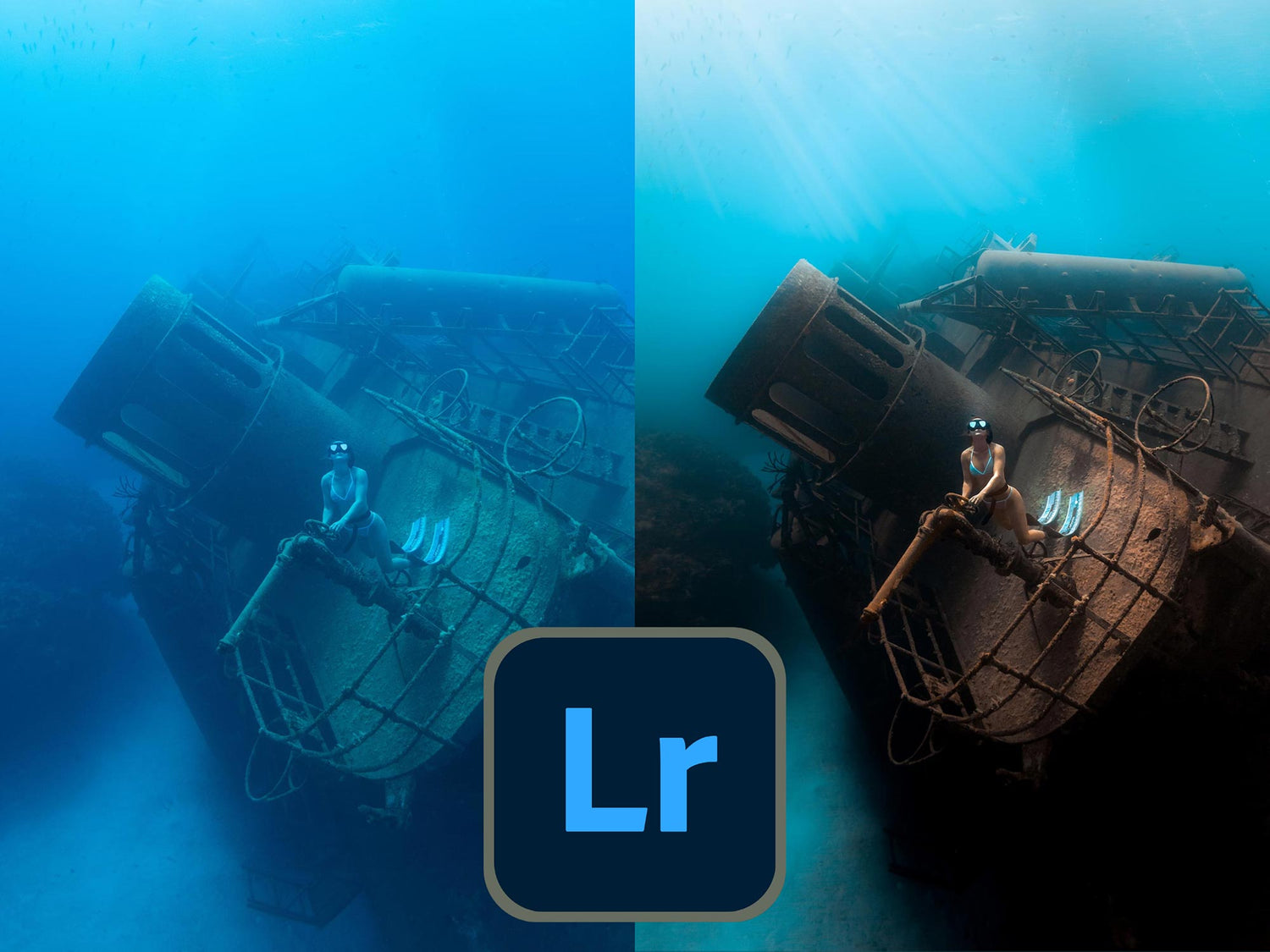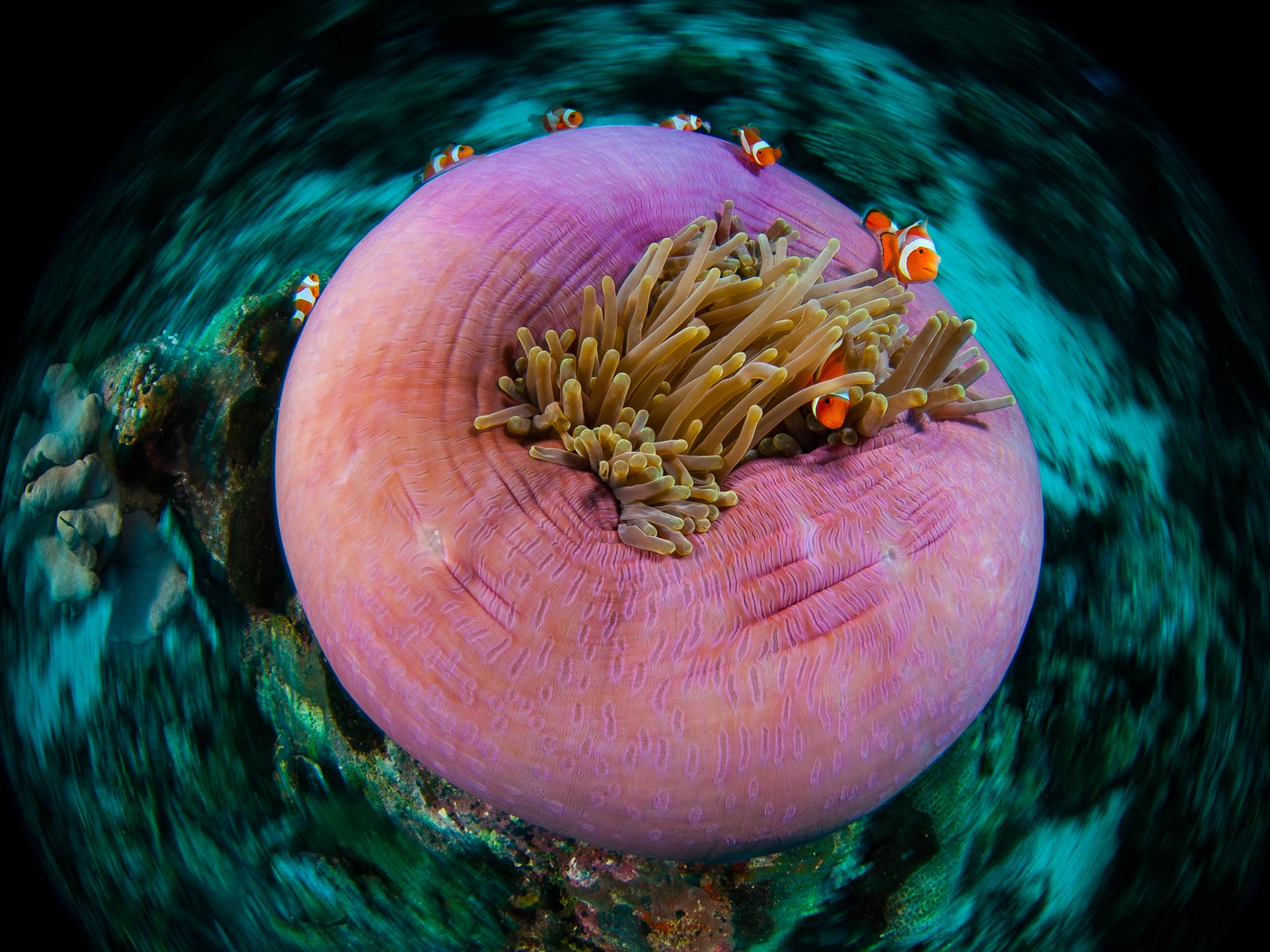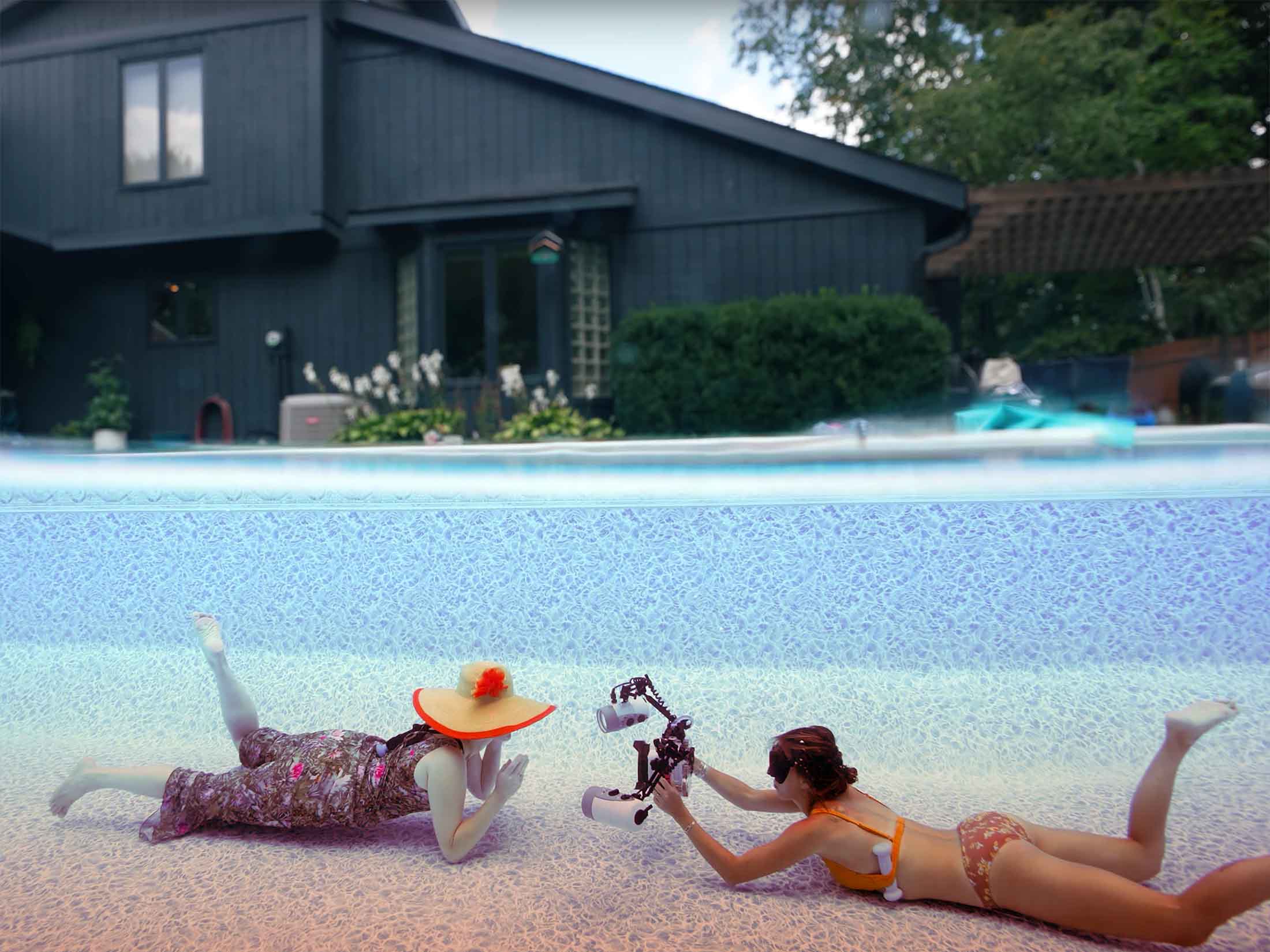An interview with Brandon Verdura
Color grading is a powerful tool for underwater photographers. It takes you beyond color correcting for the lost reds, purples, oranges, and yellows that are absorbed as light passes through the water. Color grading enhances the natural colors of your photos to produce a stylized look that sets a mood and helps you tell a story.
Ambassador Brandon Verdura is a master of natural light freediving photography. He leverages a deep understanding of color theory and color grading to create a style that is distinctly his own. Below Brandon reveals the secrets to his success and how to apply his techniques to your underwater photos. He also shares free Lightroom presets for you to put them to the test with your underwater photos.

If you're just getting started in color grading, presets are an easy entry into photo enhancement. © 2022 Brandon Verdura
Why is color grading necessary in underwater photos?
I think it is necessary because of how color gets absorbed by the water. The deeper you go the more color that gets absorbed. The first colors to get absorbed are red and orange, which is why most photos out of the camera look blue/green. One of the first things I do when editing is adjust the white balance (temperature and tint) to bring back some of those colors.
Can you go too far in color grading?
I don’t think so. Sure there are images I see that I don’t necessarily like the color grading, or I might find too aggressive for my taste, but this is an art form. Just because I don’t like something, doesn’t mean it is not beautiful to the creator or others. That is what makes art so powerful. It gives people the ability to freely express themselves without any rights or wrongs.

Before color grading this image of a lionfish is mostly just shades of blue. © 2022 Brandon Verdura
Are there any images that are impossible to color grade effectively?
I would say an image shot as JPEG and not in RAW at depth would be pretty difficult to color grade. Sure, you can spend hours in photoshop masking selective color corrections, but who wants to do that when it's not needed.
One of the most important things I tell people for underwater photography is to make sure they are shooting in RAW. RAW saves your file as the sensor captured it, no compression, nothing added or taken away from the image. These files will be much larger than their JPEG counterpart because of this. JPEG files are compressed, and any in-camera filters/edits will be automatically added to the photo. Once this is done it can not be reversed. This will limit your ability to edit the image. When you are editing an image you want all the information to be adjustable to your liking. Imagine getting a meal that’s already been cooked… at this point all you can really do is maybe add some salt and pepper. That’s JPEG.
On the other hand, RAW is having all the ingredients ready for you to prepare to your liking and we want more than just salt and pepper at our disposal. Having all those “ingredients” will allow for more flexibility when adjusting colors and exposure within the image in post-processing. This also alleviates having to worry about white balance. White balance is one of the in-camera settings that will be added to JPEG photos, but not RAW. That being, I just leave my white balance in AUTO.

After color grading, the rich reds and oranges of this lionfish are distinguished, as well as the sand and gradient light blue of the background. © 2022 Brandon Verdura
How do you describe the look of a natural light photo compared to a strobe-lit photo?
Well, I would describe the look as…natural. Meaning my subjects will blend into the scene. While on the other hand, strobes help make the subject stand out, putting a spotlight on them. Now take everything I say with a grain of salt because I have never used strobes before. I’m only going off of what I've seen others create using them.
What are the benefits to shooting natural light?
For me, a huge benefit of using natural light is having less drag on my housing. Being that all my photographs are taken while Freediving, that drag really takes a toll on the time I have at the bottom to capture an image. Also, having one less setting to adjust while holding my breath is always helpful. I have been contemplating on getting strobes though, to have fun and create something different with. I really like how strobes can bring back natural colors at depth, and that spotlight effect could be fun to get creative with.

Color grading isn't just for natural light shooters, you can also use color grading to punch up existing colors in your images, create a specific mood, or give your photos an artistic look that is uniquely your own. © 2022 Brandon Verdura
You take amazing photos without strobes even in very dark environments like caverns - what is the secret?
The secret is to have a team on each dive… Holding lights, bounce boards, and soft boxes to light the subject….Ok, just kidding. You don’t need any of that. Having a good camera that has good dynamic range and ISO capabilities will definitely help create in dark environments.
Also, another little tip is when I am shooting, I almost always have -7 exposure set. That way when I am shooting in a cave, my metering system won’t see the dark scene and spike the exposure as much. This will protect the light on the subject from being blown out, which is important. One, because my subject is obviously important to me, and two, because highlights are harder to recover than shadows are. So given the choice, I always choose a darker image.

Before color grading this sea turtle photo is awash in blue and green. © 2022 Brandon Verdura

After color grading, the brown and orange hues of this turtles shell pop and have a dramatic contrast to the dark sea floor. © 2022 Brandon Verdura
How do you deal with noise from high ISO while shooting in dark environments?
I have my max ISO set to 1600, and my camera handles that pretty well. I have rarely ever had to go above that setting. I suggest everyone shoot at different high ISOs and see what they are comfortable with. Then they can practice editing some high ISO images and see if they can still get a result they are happy with. This way, they know the max and can make other adjustments as needed. If I do have a lot of noise I will most likely adjust the noise in photoshop so I can mask out certain areas to make sure I am not making certain parts of the image too soft.
How much subject isolation do you have to do when color grading underwater? Are you color grading the image as a whole or in parts?
I mostly color grade the image as a whole. Every once in a while when the colors aren’t working together I will go ahead and mask the subject to color grade them specifically.

Lightroom presets, like Brandon's, make enhancements and definition quick and easy. © 2022 Brandon Verdura
How is color grading video different than photos?
Well depending on if you are staying at depth or actively diving, it can be quite a pain. That is due to how colors changes at different depths. So if you color grade for the reef at the bottom, and bring back the reds and oranges, if you continue filming on your way to the surface, the end of that shot is going to be overly saturated in reds and oranges.
Do you use color profiles while filming? Do you shoot in LOG?
My camera unfortunately does not have the capability of shooting in LOG, if it did I would definitely use that. I just use the flat profile.
 |
 |
Side by side, it's easy to see the dramatic impact color grading has on your underwater images. © 2022 Brandon Verdura
Ready to dive in?
Whether you're a natural light shooter or you're looking to set your images apart from the crowd, color grading is a great tool to add to your post-processing arsenal. Check out Brandon's website for two free Lightroom color grading presets to get you started.

Brandon Verdura is an avid photographer, freediver, and US Coast Guard helicopter rescue swimmer living out his dream in Oahu, Hawaii. He developed a passion for the water at a young age, learning how to freedive and spearfish in his father’s footsteps in South Florida. His career takes him to many water-based locations where he is able to master and practice his love for photography. Check out more of Brandon’s work on his website or Instagram @brandonverdura.
Want the easy way to improve your underwater photography? Sign up for our weekly newsletter for articles and videos directly in your inbox every Friday:
Additional Reading
Natural Light Photography Underwater
Why You Need Strobes Underwater
Underwater Photo Editing: Trash to Treasure Using Lightroom [VIDEO]
Getting it Sharp: Back Button Focus and Post Processing Workflow













